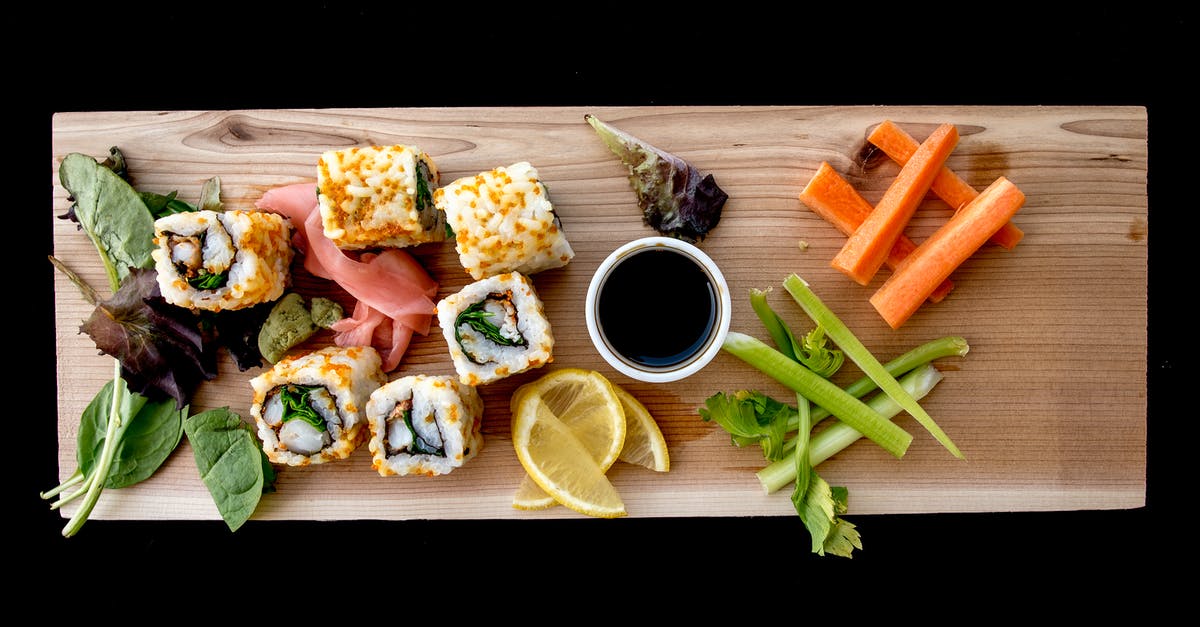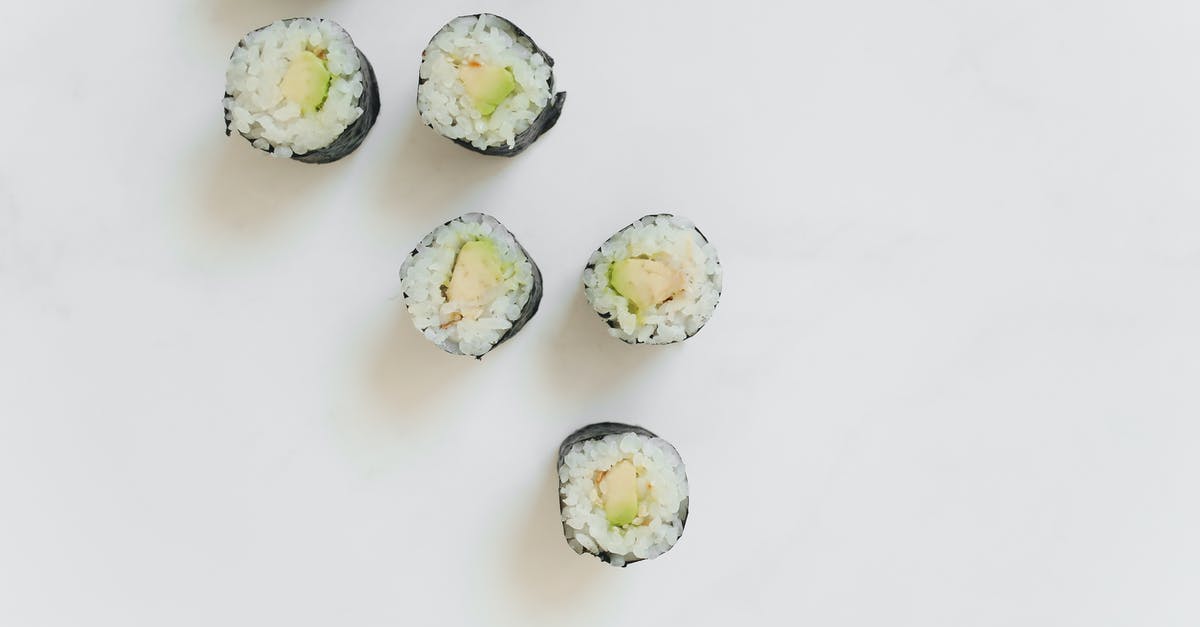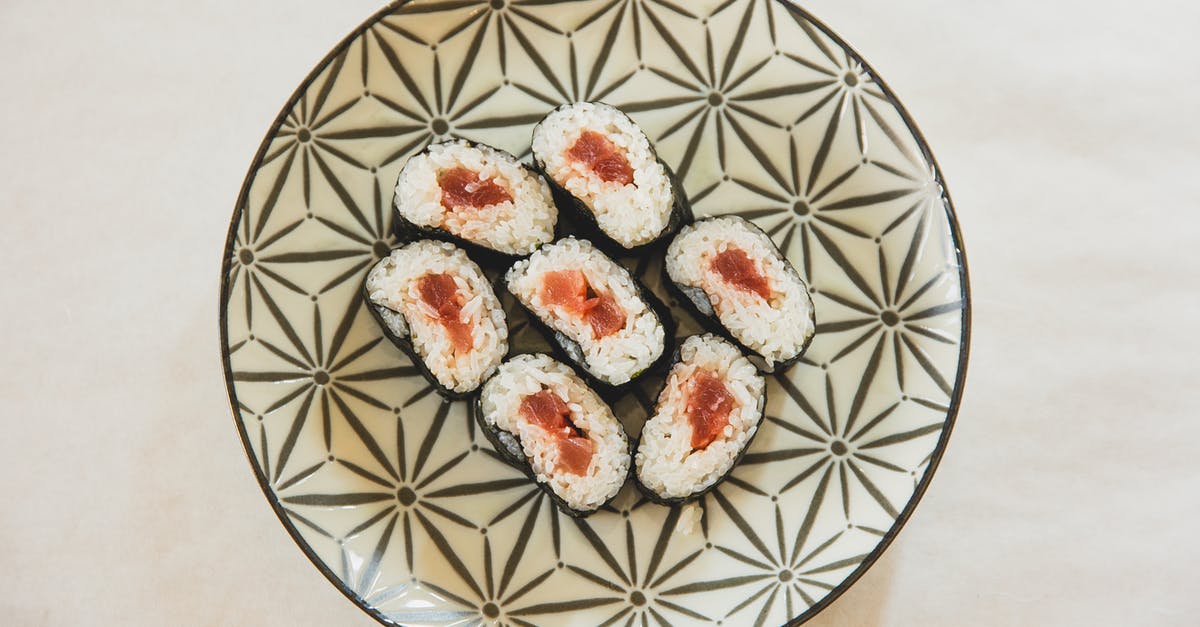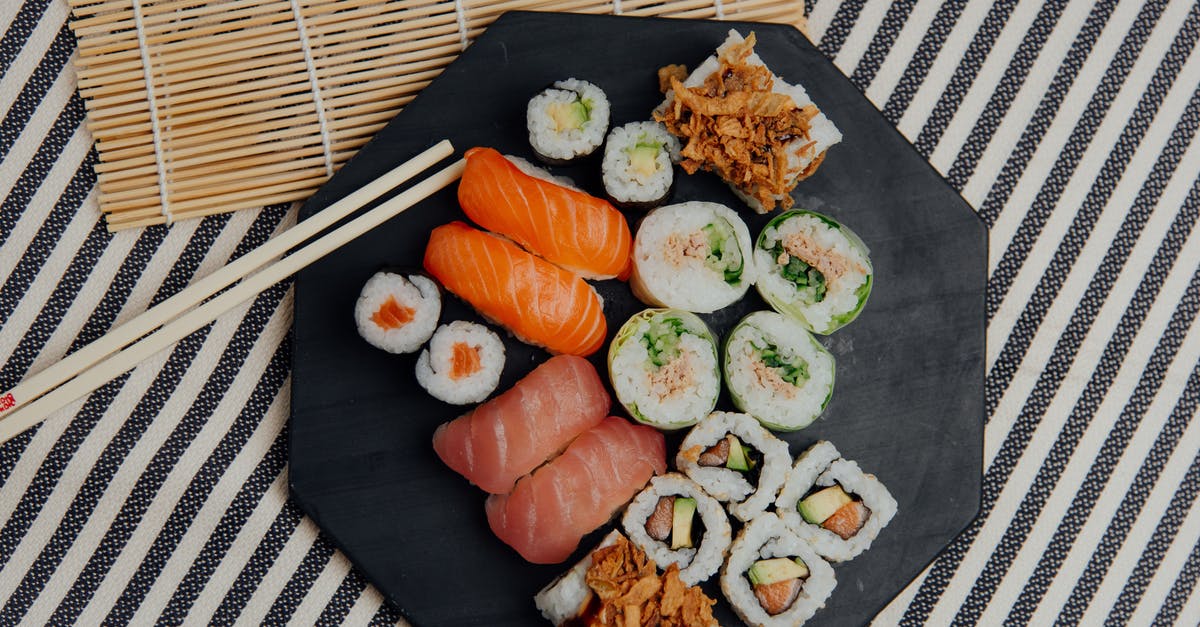Stove top Sushi rice - Which method?

I am planning to have my first attempt at making sushi by myself in a few days. Right now, I am still struggling with the rice and it's cooking. Many recipes/tutorials call for a rice cooker which I don't own, so I can only cook the rice in a pan on top of my stove.
I know this also can be done and the results can be quite good, but what is the best method for this? What ratio of water : rice should I use, how long should I cook the rice and at what temperature? How long should the rice rest? Anything I really have to take care of in general while cooking?
Cheers
Best Answer
It is the rice that is important, regardless of the cooker you use. If you think you are unable to find Sushi rice on your own in local market, why not check with a Sushi stall chef/owner near by?
Some people get mistaken with sticky rice, because really Sushi and sticky are on the same category. You could even say that Italian risotto is as well. However sushi rice is rinsed and surface starch is removed.
Yamikuronue has already given you some good insight. Perhaps she could tell you what rice you could buy :)
I hope you have the basic sushi rolling bamboo mat to help you with. From mine and many of others' experience, the mat is very useful.
I have used this brand to make nice maki rolls. The following recipe seems to be indicating a method (water sprinkling) that I saw/ate in a Japanese restaurant in Tokyo near Maru building. Hope it helps.
Edit 1: If you want to make best sushi out of normal rice, this is a bruteforce method we tried at home for the first time. Not the best Sushi found in a Sushi bar in Japan, but still it was a taste to remember, and an experience that made sense.
- break the long grain rice (you can use a mortar, or bottle, or any clean/non-contaminated cylinder on your cutting board :) )
- wash the rice until the starch goes away - even if it's not 100%, it's good enough when you have soaked it.
- soak the rice
- rinse and wash again and rinse
- depending on the usual 'hardness' of the rice you use, and how much water you add per cup of rice, you may have to change the amount of water you add. For example, if you have 50g of raw rice, and 75g of water, then the total weight is 125g. You must keep the same total weight when you add water to the soaked/washed rice.
- you can very well cook the rice in a pan
- good heat to cook rice: after boiling, bring down the heat to minimum and let it be, no need to take lid off
- once rice is cooked, you can mix it with sushi vinegar . If you do not have rice/sushi vinegar, then you can add some plain vinegar and pinches of salt
- mix all, stir well
This gives you just nice rice for sushi :)
Pictures about "Stove top Sushi rice - Which method?"



How do you make sushi rice on the stove?
Turn the heat on your stove to medium-high. Cover the pot and bring the water to a boil. When the water begins to boil, reduce the heat to simmer and continue cooking the rice until all of the water is absorbed into the grains. For 2 cups of sushi rice in 2 cups of water, this will take about 20 minutes.What is the cooking method for sushi?
Let us take a look at some of these.What is the first method of stovetop cooking of rice?
How to cook rice on the stove (my default method)Which rice cooking method is best?
The Classic Method- Rinse the rice.
- Use the right ratio of water. Add 2 parts water and 1 part rice to a large pot. ...
- Bring the water to a boil. Once it's boiling, add a big pinch of salt.
- Maintain a simmer. ...
- Cook without peeking or stirring. ...
- Let the rice rest covered. ...
- Fluff the rice with a fork.
How to Make Sushi Rice - The Quickest and EASY Sushi Rice!
More answers regarding stove top Sushi rice - Which method?
Answer 2
The rice, as you know, is the cornerstone to quality sushi – no matter how superior seafood you obtain (which is also very important), if the rice isn't done properly your sushi fails.
Always use a glutinous, short-grained, japonica rice, or else your rolls and other sushi construction will likely fall apart as soon as your guests pick it up. A good quality rice will not have too many broken grains. Rinse it several (at least five or six) times, let it soak for 15-20 minutes at least one of the rinse cycles.
Unlike long grain rice, most sushi rice instructions (including what I use) call for equal amounts water and rice, or closer to it than the usual 2 parts water to 1 part rice. Bring it to boil, cover it then let it cook on your stove's lowest setting. Cook it without removing the cover for about 12-15 minutes before checking for doneness.
For two cups of rice, use about 1/4 cup of rice vinegar, and approximately two or three tablespoons of sugar. I recommend using unseasoned rice vinegar and adding sugar to your taste rather than using the pre-sweetened stuff, so you can control the amount. Add a couple of tablespoons of mirin (Japanese cooking wine), optionally a pinch of salt to taste.
Combine the other ingredients while the rice is cooling to about body temperature (98F; 36C), then mix gently with the rice, being careful not to smash or break the grains,then assemble your sushi.
Eat the delicious sushi until you either explode, or need a crane to lift you away from the table.
Answer 3
I tend to buy pre-packaged "Sushi rice". It's short grain rice, but it will have instructions on how to prepare and cook it. It helps me and it always comes out perfect. It's also local and organic and a bit expensive, but like you, I have no idea how to cook short grain rice from bulk.
You MUST rinse the rice repeatedly. Soak and rinse. Soak and rinse. Repeat many times. Wash it with good cold water until the water runs clear through it. Be sure to use your hands to stir it in the water, you will see the water turn to milk. I'd say you will need to rinse a good 1 cup of rice at least ten times, maybe twenty. It makes a huge difference on the finished product. You want your rice to have a shiny appearance and to look clear once it's finished cooking. It should look "glassy". You do not want the rice too sticky, white or milky because it's harder to roll and is chewier.
Once the rice is cooked, the real secret I notice that many people skip is using vinegar, a paddle and a fan blowing on the hot rice to cool it down. This is a traditional step that is easily skipped, and in my opinion, makes it real sushi rice. A good fan, a good paddle and good rice vinegar are very important, to get the right texture for rolling the rolls. Before electric fans the Japanese used to use Palm leaves and other methods for fanning by hand. Some traditional places still do it with palm leaves.
Once the rice is cooled down to room temperature, it's ready to roll. You need plenty of vinegar for your hands, to keep the rice from building up on them. You will understand that after your first roll. Keep the vinegar near, you're going to need it and often!
Of course, a lot of the Japanese I know tend to use the Zojirushi rice cookers. They make life easy for someone who wants to do this often.
Answer 4
It's entirely possible to cook using a hob:
- Use a 1:1 ratio of rice to water in a heavy pot/Dutch oven. If you're using kombu, use a 2" piece for every 2 cups of rice, slit the kombu first to release the flavour
- Bring the rice to a boil, then simmer at the lowest heat setting (remove the kombu).
- Once it starts to simmer, put the lid on the pot and don't take it off until you're finished.
- Cook the rice for about 15 minutes, then remove the pot from the heat and let it sit undisturbed for another 10 minutes.
- Remove the lid and fluff the rice with a rice paddle.
Answer 5
I have never attempted to make my sushi rice differently than my normal rice. I know there are sushi rice recipes that call for rinsing and draining the rice several times before cooking, but I simply don't care enough to go through that effort for (at least what I perceived to be) almost no difference in the end product. I also don't bother paying extra for sushi rice, I just go for my normal basmati or jasmine, whichever is cheapest.
That said, here's my method. Add one part rice and two parts water to a stock pot. Cover and cook on high until boiling, then reduce the heat to as low as possible. Don't take the lid off until the very end to taste test. Don't stir while it's steaming. I don't set a timer, I simply check in 10-12 minutes until the rice is done. (I know when it's done by tasting it, you can tell it's getting close when there's not a lot of water left in the pan.) This method works very well on a gas range. I just moved to a new place with an electric stove, and I've realized I have to heat the rice lower than the hottest setting so that when I turn it to low it doesn't boil over.
Sources: Stack Exchange - This article follows the attribution requirements of Stack Exchange and is licensed under CC BY-SA 3.0.
Images: Frans van Heerden, Polina Tankilevitch, Ryutaro Tsukata, Olga Lioncat
